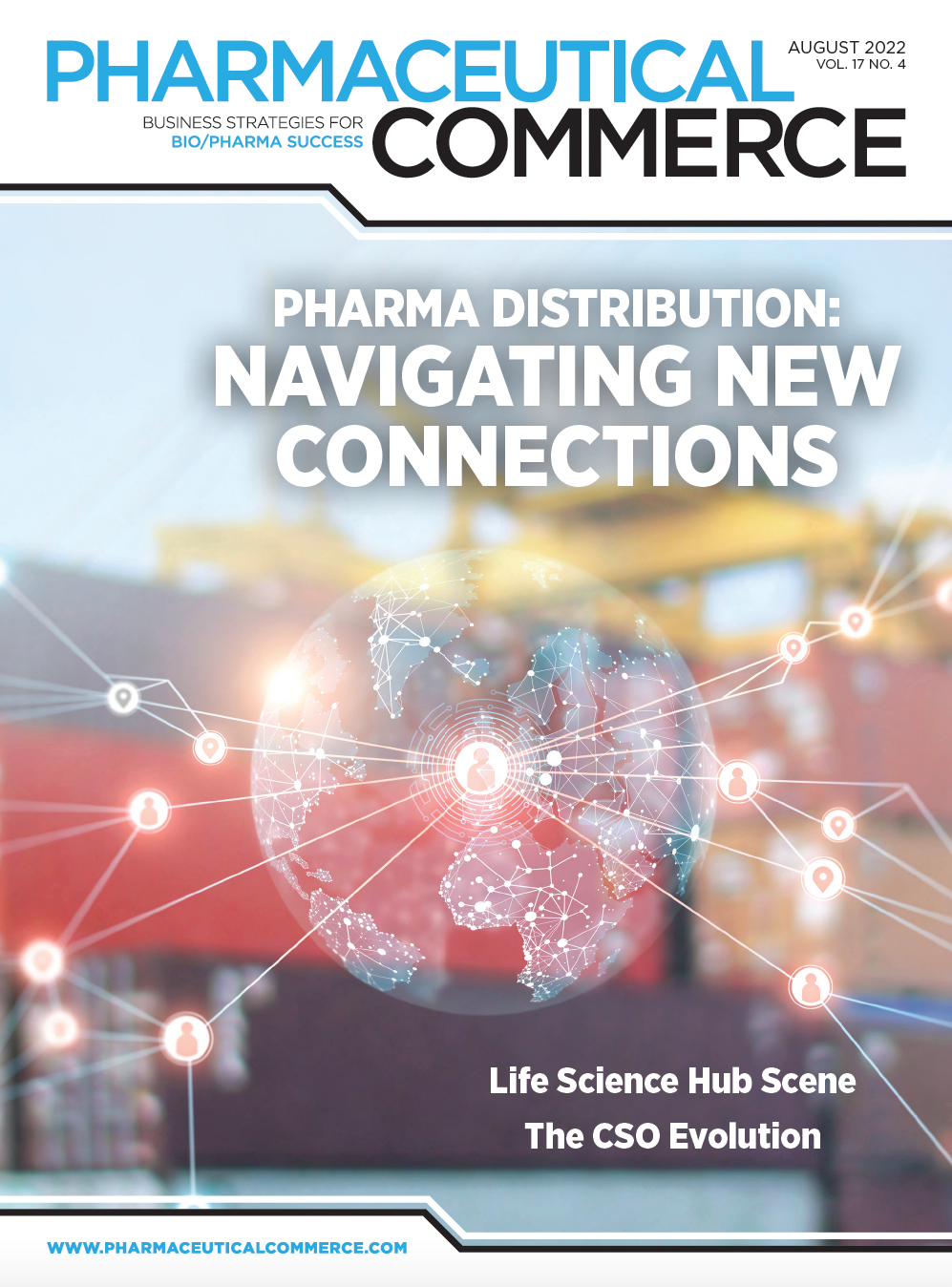The ‘Visibility’ Value in Face of Crises
One month after a GE Healthcare factory in Shanghai, China shut down, the facility was operating at just 25% capacity in mid-May. Across the globe, providers felt the effects of that shutdown were being felt. Doctors in the US were forced to prioritize which patients were able to receive the critical contrast dye used to see inside the body during CT scans and MRIs. The iodine solution is used in almost every hospital. It helps medical professionals monitor tumors, guide placement of stents, and so much more.
Amy Shortman

One cardiologist in Massachusetts told The Washington Post in May that the hospital he worked at had enough contrast media on hand to last the next five days. And the GE Healthcare factory wasn’t expected to be back to normal until the end of June.
The supply chain crisis that dominated headlines during the holiday season at the end of 2021 hasn’t gone anywhere and continues to impact virtually every sector of the global economy. Earlier during the pandemic, the supply chain crisis in healthcare manifested itself in a shortage of personal protective equipment. Now, virus-related lockdowns in Covid-cautious China, Russia’s invasion of Ukraine, rising costs of energy and transportation, and a shift in labor is threatening to disrupt the flow of critical medical supplies—like the life-saving semiconductors used to make medical devices.
There have been shortages of devices like dialysis-related products, testing supplies, and ventilation-related products, according to the FDA. Expert predictions that warned at the end of 2021 and into 2022 that the supply chain crisis wouldn’t improve in the near-term have proven to be true. And while record-high inflation numbers have taken a lot of the spotlight away from the nightmare supply chain scenario, the problem persists, and threatens to get worse. Driver shortages, port closures, and lagging infrastructure improvements in the US paint a bleak picture for the immediate future of the supply chain.
While there has been little relief from the crisis, technology solutions like visibility have and will continue to soften the blow felt by businesses and, in turn, consumers. The transportation logistics industry has long been slow to adopt new technologies and modernize, but there’s been a major shift recently.
Here are some ways visibility technology is solving problems at a time when it’s needed most, and how digitization is the key to overcoming supply chain crises.
It’s more than a dot on a map
Having a dot on a map to indicate where something is located is, of course, important, but actually being able to access additional data and information about that location is where modern visibility technology shows its value.
Visibility technology can provide actionable insights. Port delays and the demurrage costs that sometimes come with them can be avoided if the stakeholder in the supply chain has access to beneficial data and information to, perhaps, direct a shipment to a different port.
Visibility at times becomes a real-time compliance check. Vaccines are a good example of this. COVID-19 vaccines have strict parameters around the temperature at which they’re stored. The Pfizer-BioNTech vaccine, for example, is shipped in a thermal container at temperatures between -90°C and -60°C (-130°F and -76°F) with dry ice. Digitization can help keep the vaccines at the proper temperature. Companies can improve efficiency and better use resources by feeding data to a mobile app that anyone can use, regardless of their logistics experience. Any employee can scan the external code on a box and confirm a product is at the right temperature.
Patients depend on these products. Visibility takes on an even higher value and enables a company to understand what's happening around a shipment in real time and to be able to take corrective actions to mitigate impact.
Other use cases that go beyond the “dot on the map” include data that provides information about upcoming weather conditions or potential traffic patterns that might impact the shipment.
When will my shipment arrive?
The era of Amazon and other rather instant delivery services has created the expectation among consumers and businesses alike that they’ll always have a window into where their product is and when it’s going to arrive.
Businesses that have been historically focused on a normal continuity of supply have started to panic over the last few years as things have shifted. Now, they’re looking further upstream to be able to support and mitigate disruptions and customer satisfaction downstream. Because of that, visibility technology has become a pivotal solution for having visibility down to the purchase order level. Having an automated method of communicating any potential disruptions—like a hurricane or other major storm in an ocean—that have an impact on the shipment keeps a constant flow of information.
A more accurate estimated time of arrival during times of turbulence (like port backups and factory shutdowns) can help companies make strategic decisions to benefit both the business and its customers.
Visibility to combat labor troubles
The Great Resignation hasn’t bypassed the supply chain and logistics industry, and the shortage of drivers across the globe has been well documented.
Like in many other industries, digitization can help stem the tide. Visibility technology and data enable the humans in the supply chain loop to focus their attention and resources on making decisions that add an impact to the bottom line for the company—but also the customer. Of course, we still need humans, but companies are starting to allocate specific elements of the business to automation, and those insights gained from technology can give a full picture to the person making the decision.
Digital transformation into sustainability
Digital transformation in the supply chain has been a growing trend. Gartner estimates that through 2024, 50% of supply chain organizations will invest in applications that support artificial intelligence and advanced analytics capabilities. The coronavirus pandemic added new velocity to digital change.
Companies right now are in various stages of their technology maturity, working to digitize complex systems to overcome the challenges of today while setting themselves up for success to combat the challenges tomorrow will bring.
Most of the supply chain issues of the last two years can be directly attributed to the pandemic.
Many companies are shifting their focus to sustainable formats for the future. Supply chain managers expect their focus on the circular economy—the sharing, leasing, reusing, repairing, refurbishing, and recycling of existing materials and products—to increase in the next two years.
Surely, that could improve the healthcare supply chain and cut down on shortages affecting the global healthcare industry worldwide.
What’s next?
The overall view of the future of the supply chain crisis isn’t a rosy picture. Rising fuel prices and continued disruptions to the supply chain are going to persist throughout 2022, and we’ll see companies looking to cut costs. The other side of that equation is that technology can solve that problem.
Three or four years ago, no one thought we’d be in this situation, but here we are: hospitals forced to ration supplies and care due to snags in the supply chain. Life-saving vaccines being shipped in temperature-controlled boxes. A shortage of tubes and pipettes and dialysis systems.
This crisis will make companies change the flow of their distribution and supply chain models. When air and ocean freight capacities were not a problem and costs were low, it made more sense to have what we now see as our global supply chains. But as those costs increase, offsetting them with a more localized supply chain is the direction a lot of companies are moving toward.
Along the way, they’ll have no choice but to continue to digitize to gain valuable insights and improve efficiencies.
About the Author
Amy Shortman is Vice President of Product Marketing at Overhaul.
